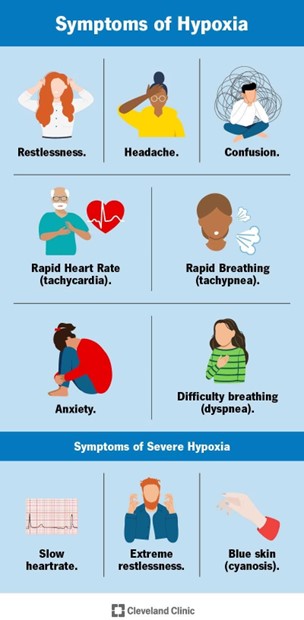The birth weight of an infant delivered by a woman with gestational diabetes is 10.1 pounds (4,581 grams). The infant is jitery and has a heel stick glucose level of 40 mg/dL (2.2 mmol/L) 30 minutes after birth. Based on this information, which intervention should the practical nurse (PN) implement first?
Reference range:
Blood glucose neonate: [30 to 60 mg/dL or 1.7 to 3.3 mmol/L]
Offer nipple feedings of 10% dextrose.
Begin frequent feedings of breast milk or formula
Repeat the heel stick for glucose in one hour
Assess for signs of hypocalcemia
The Correct Answer is B
A. Offering 10% dextrose via nipple feeding is used for infants who are unable to feed orally or with severe hypoglycemia. This neonate is still within range hence dextrose is not incicated at this point.
B. The infant is jittery with a glucose of 40 mg/dL, which indicates mild symptomatic hypoglycemia. Initiating frequent feedings of breast milk or formula is the first action to stabilize glucose while supporting oral intake.
C. Repeating the heel stick is important for monitoring, but it does not treat the low glucose and is not the first action.
D. Assessing for hypocalcemia may be indicated later, but the priority is addressing hypoglycemia through feeding.
Nursing Test Bank
Naxlex Comprehensive Predictor Exams
Related Questions
Correct Answer is D
Explanation
d. “May I sit with you for a while?"
This comment shows empathy, respect, and support for the client, without being intrusive or judgmental. The PN acknowledges the client's feelings and offers companionship, which can help reduce isolation and loneliness.
The other options are not correct because:
- This comment may be perceived as coercive or dismissive of the client's feelings, as it tries to persuade the client to do something he does not want to do or enjoy.
- This comment may be perceived as accusatory or interrogatory, as it questions the client's decision or motive for staying in his room.
- This comment may be perceived as minimizing or invalidating the client's feelings, as it implies that the client should not be sad or that his family is doing enough for him.
Correct Answer is ["A","E"]
Explanation
The level of hypoxemia that the child may have experienced during the submersion depends on several factors, but the most important ones are:
- The **temperature of water**: Cold water can induce a diving reflex, which lowers the heart rate and oxygen consumption, and may protect the brain from hypoxic injury¹². Cold water can also cause laryngospasm, which prevents water aspiration but also impairs gas exchange.
- The **amount of time the child was submerged**: The longer the submersion, the more severe the hypoxemia and the higher the risk of brain damage and death. The survival rate decreases significantly after 5 minutes of submersion³.
The other factors are less relevant or not directly related to the level of hypoxemia:
- The **weight of the child**: This may affect the buoyancy and the ability to float or swim, but not the oxygen consumption or gas exchange during submersion¹.
- The **oxygen concentration of the ambient air**: This may affect the pre-submersion oxygen saturation, but not the rate of oxygen depletion or gas exchange during submersion¹.
- The **witnessing of the fall into the pool**: This may affect the time to rescue and resuscitation, but not the level of hypoxemia during submersion.

Whether you are a student looking to ace your exams or a practicing nurse seeking to enhance your expertise , our nursing education contents will empower you with the confidence and competence to make a difference in the lives of patients and become a respected leader in the healthcare field.
Visit Naxlex, invest in your future and unlock endless possibilities with our unparalleled nursing education contents today
Report Wrong Answer on the Current Question
Do you disagree with the answer? If yes, what is your expected answer? Explain.
Kindly be descriptive with the issue you are facing.
